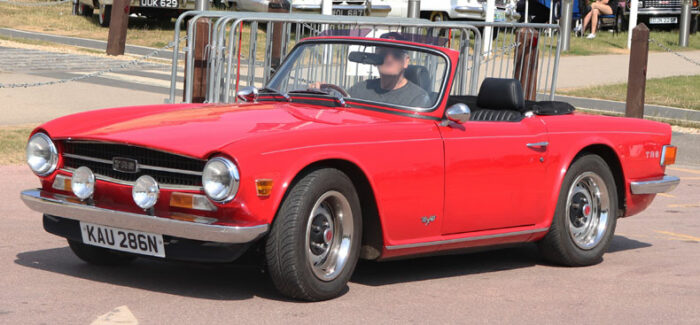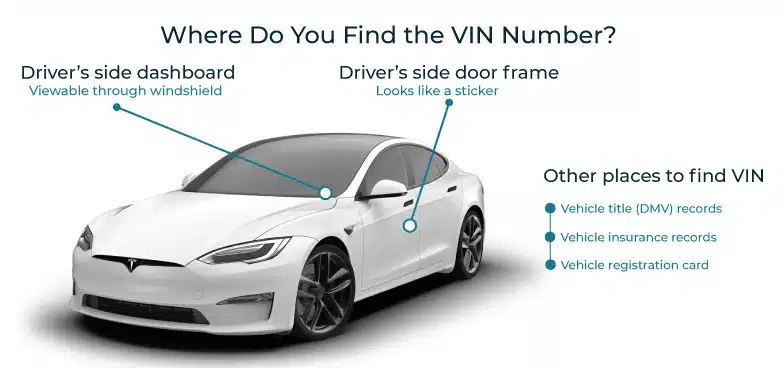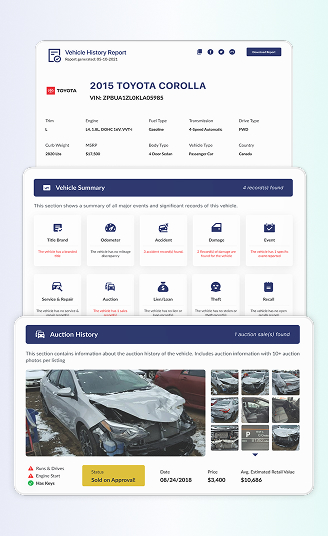
Classic Triumph VIN Decoder
Classic Triumph cars hold a special place in automotive history. Each model, from the TR3 to the Spitfire, carries a unique identity that tells its history. Run our Classic Triumph VIN Decoder and get the classic history report.
What is a Classic Triumph VIN?
A VIN, or Vehicle Identification Number, is a code assigned to every car to distinguish it from others. In modern vehicles, the VIN has 17 characters and follows a global format. However, classic Triumph cars often used shorter VINs or chassis numbers that followed the company’s own pattern.
Because Triumph used different systems across its production years, decoding these VINs can be tricky without a proper reference. Click on the form above to decode the classic Triumph VIN accurately and get the classic history report.
Where to Find the VIN on a Classic Triumph?
Finding the VIN on a classic Triumph depends on the model and year of manufacture. Here are some common spots to check:
- Engine bay or bulkhead: Most Triumph cars have a small metal plate stamped with the chassis or VIN here.
- Chassis frame: Look for engraved numbers near the front suspension or steering column.
- Driver’s side door jamb or sill: Some later models display the VIN on a small plate near the door hinges.
- Vehicle documents: Original logbooks, title papers, or maintenance records usually include the VIN.

Why Should You Decode Classic Triumph VIN?
Decoding the VIN of a classic Triumph is essential for anyone looking to get a complete understanding of the motorcycle, from its original specifications to detailed features and more.
Restoration
It ensures accurate restoration by confirming original paint, trim, engine specifications, and other key details.
Buying or Selling
It verifies the vehicle’s authenticity and build details, minimizing the risk of fraud and helping you make informed decisions.
Collectors
It validates production numbers and the model year, providing important information for collectors and enthusiasts of Triumph motorcycles.
Security
A VIN check can uncover if the vehicle has ever been reported stolen, salvaged, or had its odometer tampered with, offering added peace of mind.
What Will You Get From the Classic Triumph VIN Decoder?
Once you’ve successfully decoded your classic Triumph VIN by using the Triumph VIN decoder, you’ll get a classic history report that details all the information you need to know. Here’s what you will be getting from the report.
Vehicle Specifications
Check the vehicle’s specifications through the classic history report. In this section, you will get the detailed information on the specifications, like the engine, transmission, wheels, and tire size, carburetor, and more.
Auction History and Market Value
See if the car has ever been sold at auction. In this section, you will see the date, auction house location, real photos of the car’s auction condition, and the final price of the vehicle. By examining this section, you can be informed about the vehicle’s market value as well.
Odometer Records
Review the vehicle’s mileage logs to avoid ending up with a tampered odometer vehicle. Each record includes the date and the reading at that time, helping reveal whether the odometer appears consistent or has possible rollbacks.
Ownership Records
Get insights into how many times the car has changed hands and where it was registered throughout its lifetime. While the report keeps owner names private, it still helps paint a clear picture of how the vehicle was used and maintained.
Accident History
This section outlines any reported accidents, including when and where they occurred. Understanding the nature of past incidents can help evaluate the car’s condition and the quality of any restoration work. It also helps you assess potential safety concerns and the need for further repairs or checks before purchasing.
Damage Verification
In addition to accidents, the report identifies cases of fire, flood, or other non-collision damage. Checking this information ensures awareness of any structural or cosmetic repairs that could affect value. Knowing about past damage helps you avoid unexpected issues that could impact the vehicle’s long-term performance.
Recall History
Find out if the vehicle was recalled. The details include the cause, release date, and whether the recall was resolved, essential for confirming its safety and reliability. This information ensures that all necessary repairs have been made, minimizing potential safety risks or ongoing issues.
Theft Records
Check if the vehicle was ever stolen. You’ll see the dates, data sources, and recovery details (if available), helping verify that the vehicle’s history is legitimate and risk-free. A clean theft record confirms that the car is legally sound, protecting you from future legal disputes.
How to Decode the Classic Triumph?
To decode the Classic Triumph VIN, you should have the VIN first and follow these simple steps below.
Step 1: Find the VIN
To begin, you will need to have the VIN of the classic Triumph you want to check. Check on the vehicle’s documentation for a faster result.
Step 2: Fill in the Form
Click on the form above, then write down the VIN on the form. After that, click on the button to submit the VIN.
Step 3: Get the Report
Once the report is generated, you can check the preview section and proceed to payment. Make sure to download the classic history report.
Classic Triumph Build Sheet by VIN
Did you know the VIN can also reveal your classic Triumph’s original build details? With the Build Sheet by VIN tool, you can access a detailed record of your vehicle’s factory specifications, including base price, paint and trim colors, standard/optional equipment, MSRP, and more.
This invaluable document helps confirm the vehicle's authenticity, ensuring that any restoration work stays true to the original factory design. It’s a must-have for anyone looking to understand the full history of their classic Triumph and preserve its value for years to come.
Brief History: Pieces of Classic Triumph
Classic Triumph history began in 1886 when Siegfried Bettmann founded a company selling bicycles in England. By 1902, Triumph produced its first motorcycle, powered initially by Belgian Minerva engines.
Triumph grew rapidly, becoming Britain’s largest motorcycle manufacturer by World War I, famed for models like the 500cc Speed Twin introduced in 1937. Triumph also produced cars between 1923 and 1984. Despite setbacks, including bankruptcy, Triumph was revived in 1983 by John Bloor and continues as a renowned British motorcycle brand known for performance and style
Supported Classic Triumph Models
Check the supported classic Triumph:
- Triumph TR2
- Triumph TR3
- Triumph TR4
- Triumph TR5
- Triumph TR6
- Triumph Spitfire
- Triumph GT6
- Triumph Stag
- Triumph Herald
- Triumph Vitesse
- Triumph Dolomite
- Triumph 2000/2500
- Triumph TR7
- Triumph TR8
- Triumph Bonneville (motorcycle)
Decode Other Classic VIN
Decode all classic makes with out classic VIN decoder tool:
Classic Triumph VIN Decoder FAQs
How to identify an old Triumph motorcycle?
To identify an old Triumph motorcycle, check the prefix stamped before the engine number. For instance, an engine number like 8-T-33445 represents a 1938 Speed Twin, which was later marked as “5T.” Frame codes also help; early Speed Twins used the prefix “TH,” while “TF” was used for T-100 and the 1939–1940 Speed Twin models.
How can I tell if a classic Triumph’s engine and frame numbers match?
On many classic Triumphs, the engine and frame numbers should be the same or very close. A VIN decoder helps confirm if they match, which is important for proving originality and value during restoration or resale.
Can a Triumph VIN decoder show if my bike was built for the US or UK market?
Yes. Certain VIN formats and prefixes were assigned to export models. A decoder can reveal whether your Triumph was built for the domestic UK market or exported overseas, helping trace its full production and ownership history.


